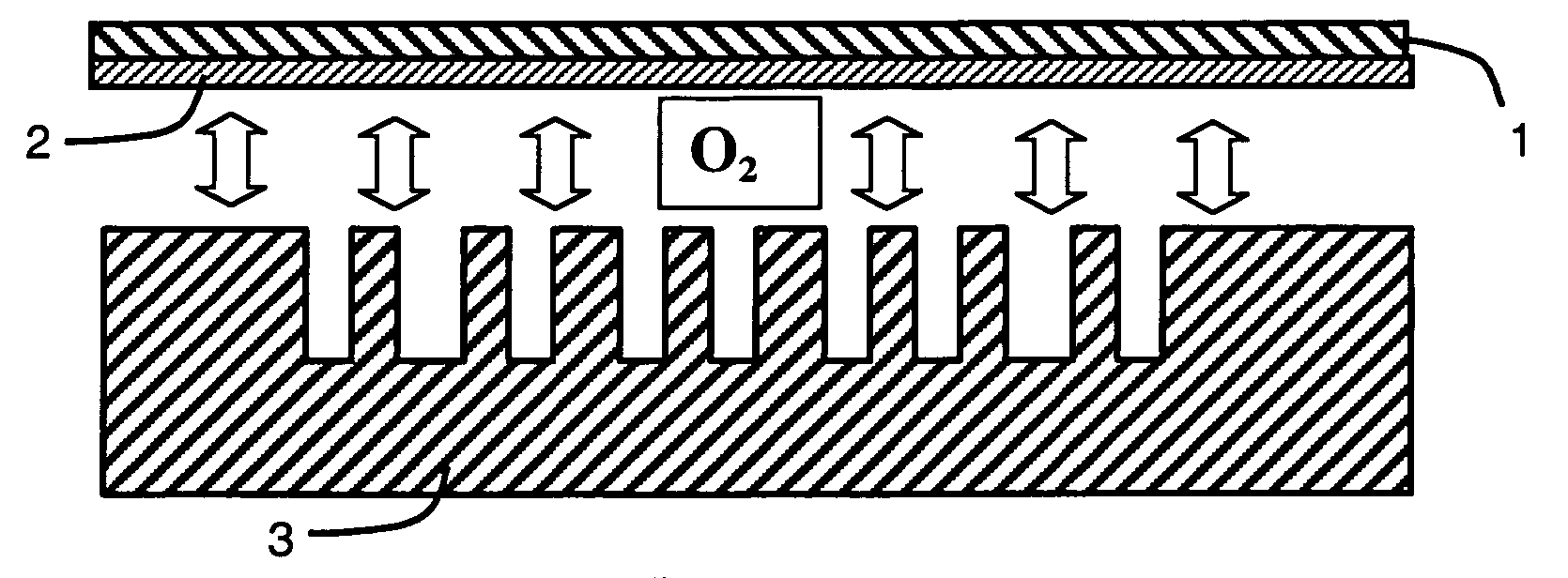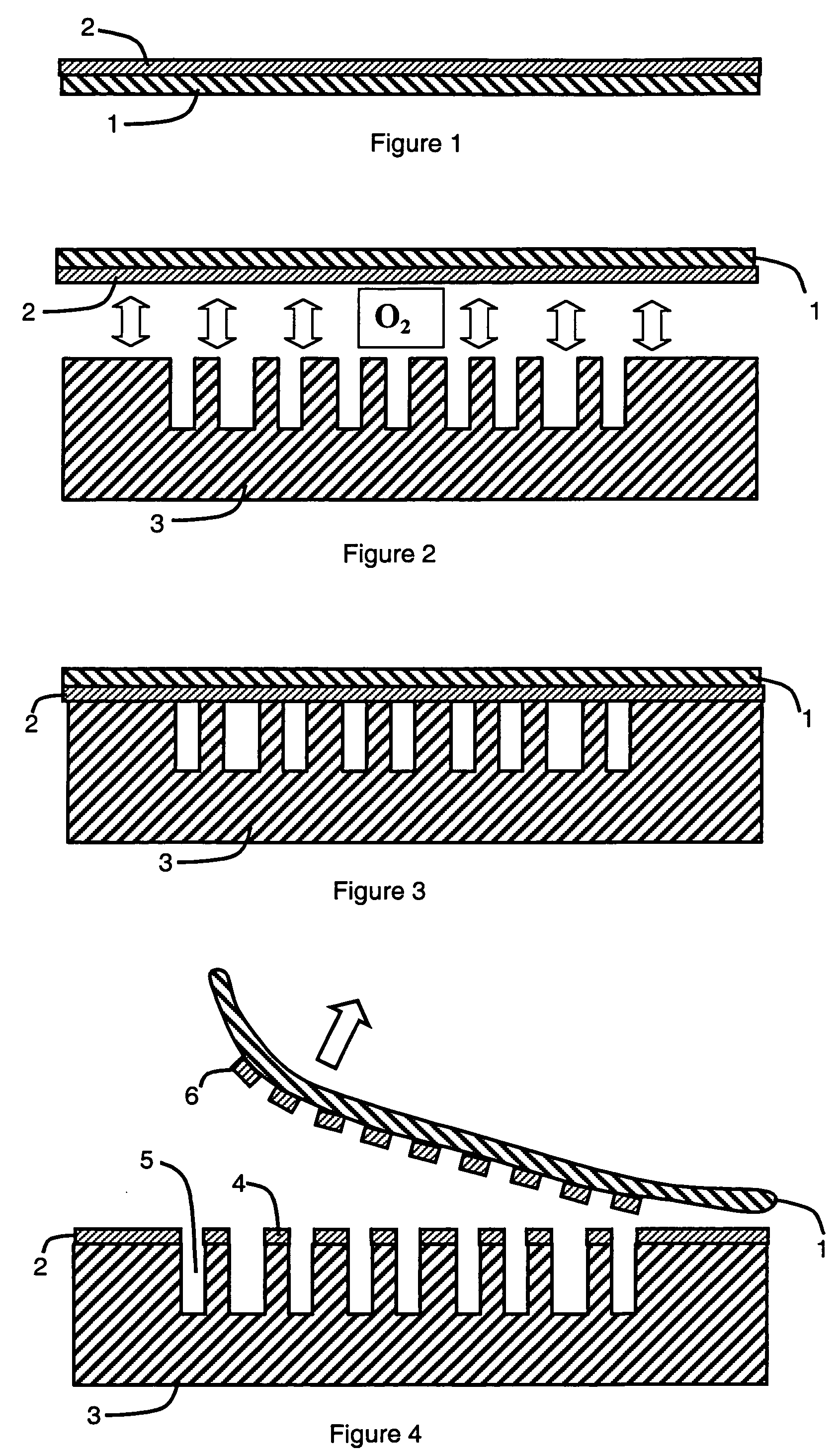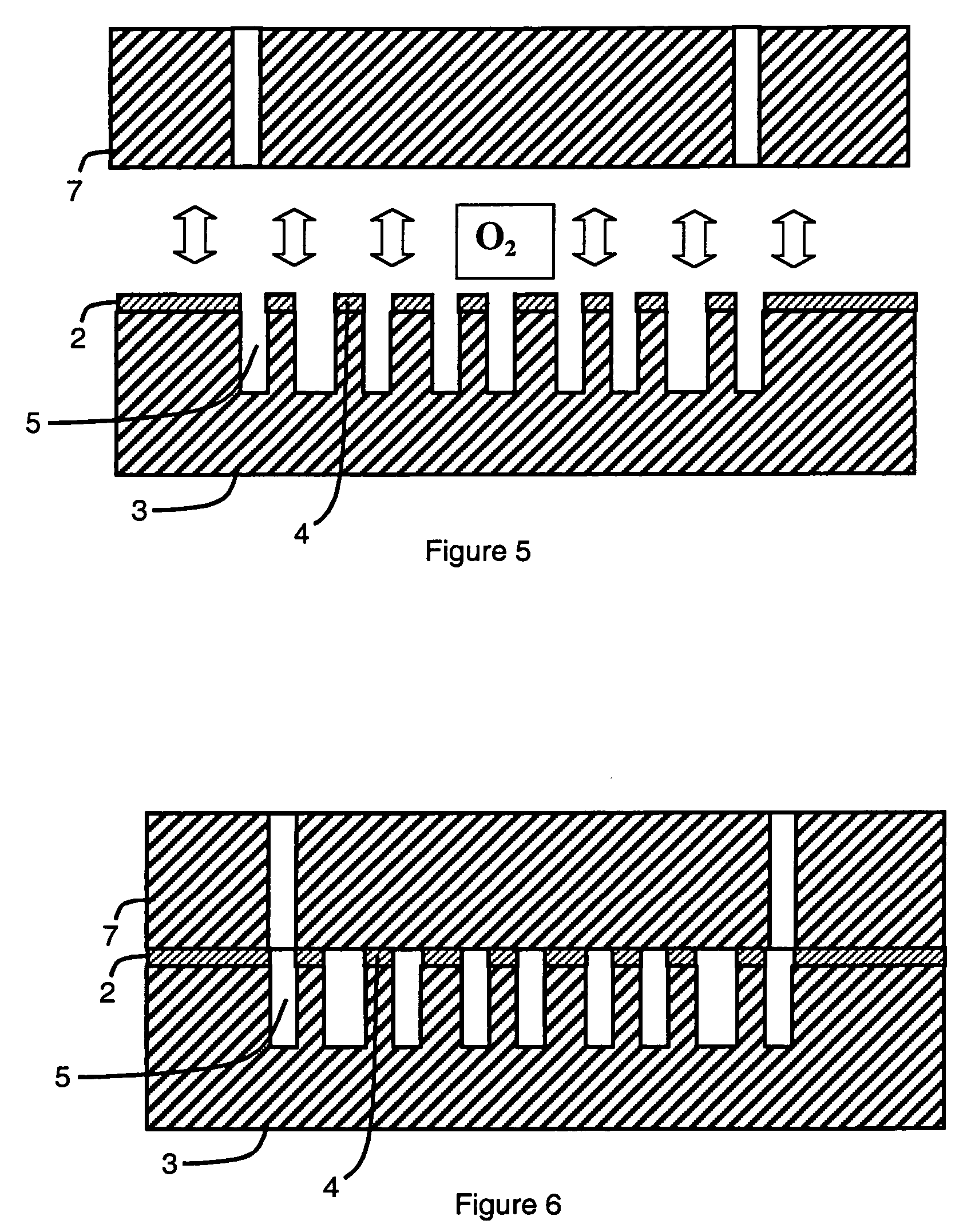Method for reproduction of a compnent with a micro-joint and component produced by said method
a micro-joint and component technology, applied in the field of components production, can solve the problems of complex methods to define the surface of the joint, the possibility of functionalizing the components, and the difficulty of handling and positioning of micro-structured joints, and achieve the effect of reducing complexity and manufacturing costs
- Summary
- Abstract
- Description
- Claims
- Application Information
AI Technical Summary
Benefits of technology
Problems solved by technology
Method used
Image
Examples
Embodiment Construction
[0019] In a first step of the process represented in FIGS. 1 to 6, a thin layer of polymer 2 is deposited on a transfer substrate 1. A typically used deposition technique is spin coating. The polymer of the thin layer 2 and the material of the transfer substrate 1 must have a chemical affinity enabling the second and third steps described hereafter. In a preferred embodiment, the materials of the transfer substrate 1 and of the thin polymer layer 2 are both Polydimethylsiloxane (PDMS). One advantageous property of a PDMS transfer substrate 1 is its flexibility. Depending on the polymer used for the thin layer 2 and on the deposition technique, an additional intermediate cross-linking step, for example by heating, can be added just after deposition.
[0020] The second step (FIG. 3) consists in bringing the thin polymer layer 2, supported by the transfer substrate 1, into contact with the micro-structured substrate 3. The chemical affinity between the thin polymer layer 2 and the micro...
PUM
| Property | Measurement | Unit |
|---|---|---|
| Affinity | aaaaa | aaaaa |
Abstract
Description
Claims
Application Information
 Login to View More
Login to View More - Generate Ideas
- Intellectual Property
- Life Sciences
- Materials
- Tech Scout
- Unparalleled Data Quality
- Higher Quality Content
- 60% Fewer Hallucinations
Browse by: Latest US Patents, China's latest patents, Technical Efficacy Thesaurus, Application Domain, Technology Topic, Popular Technical Reports.
© 2025 PatSnap. All rights reserved.Legal|Privacy policy|Modern Slavery Act Transparency Statement|Sitemap|About US| Contact US: help@patsnap.com



